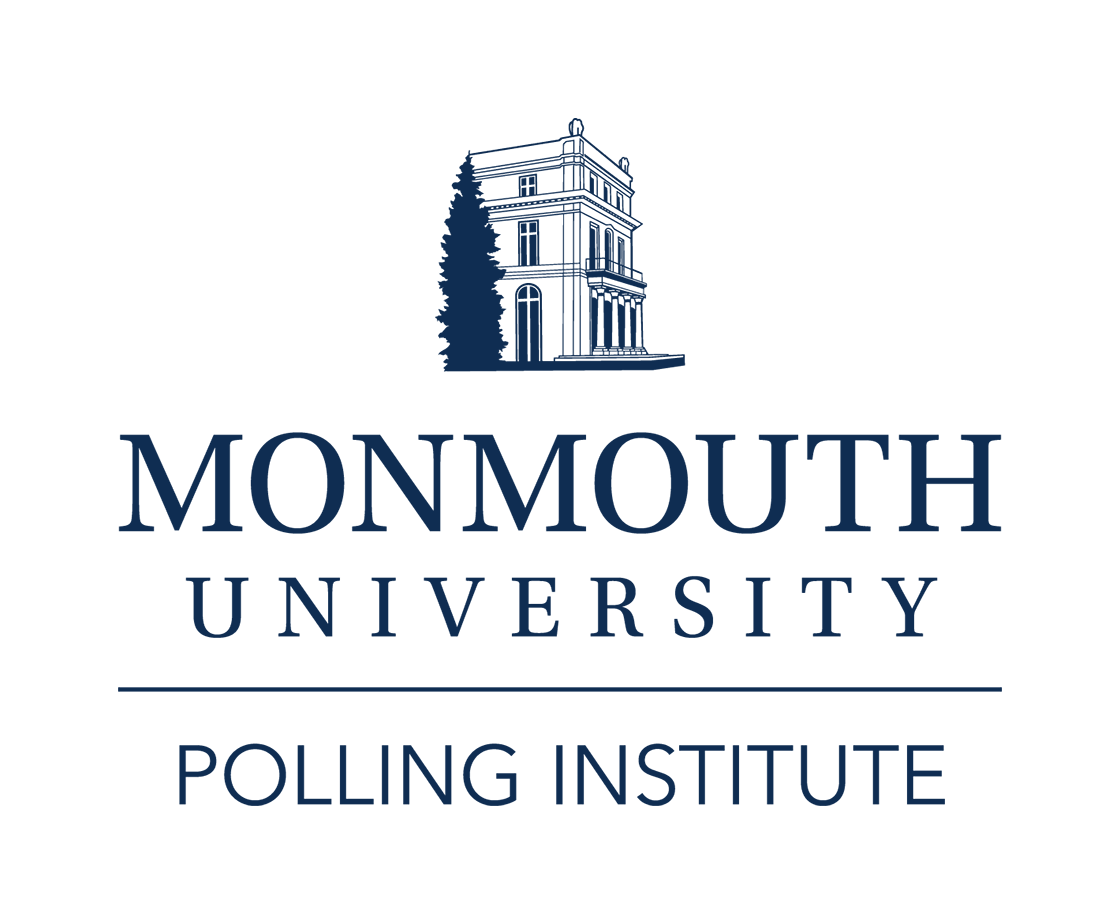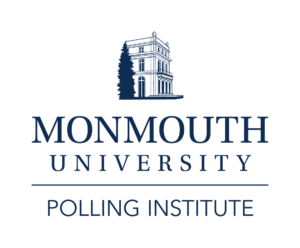West Long Branch, NJ – Hillary Clinton currently holds a commanding lead over Bernie Sanders in next week’s Maryland primary. The Monmouth University Poll also found Chris Van Hollen holding a double digit lead over Donna Edwards in the Democratic primary for U.S. Senate.
Clinton has the support of 57% of likely Democratic primary voters in Maryland while Sanders’s support stands at 32%. Clinton leads among practically every demographic group, including men (59% to 32%) and women (56% to 32%), white voters (52% to 39%) and black voters (64% to 20%), and voters under age 50 (50% to 39%) as well as those age 50 and older (64% to 25%).
“The demographics of Maryland’s Democratic electorate are similar to past primary states where Clinton has done very well. However, it looks like that isn’t as important a factor since she holds large leads among practically every voting bloc,” said Patrick Murray, director of the Monmouth University Polling Institute.
Democratic voters in blue-state Maryland say they will stick with the Democratic nominee no matter who it is. If the general election in November is between Clinton and Donald Trump, 87% of Democratic primary voters say they would commit to supporting Clinton while just 5% say they would vote for Trump. If Sanders is the nominee, 83% of Democratic primary voters would back Sanders while 6% would vote for Trump.
U.S. Senate primary
Maryland Democrats will also hold a U.S. Senate primary for the seat being vacated by long-time Democratic incumbent Barbara Mikulski. Congressman Chris Van Hollen currently holds a 52% to 36% lead in that contest over Congresswoman Donna Edwards. Eleven percent of voters are undecided.
The Monmouth University Poll found a sharp racial divide in voter support. Van Hollen has an overwhelming lead among white voters (73% to 16%), while Edwards has an almost equally large advantage among black voters (62% to 26%). Men give Van Hollen a large lead over Edwards (60% to 26%), while women prefer him by a much more narrow margin (47% to 43%).
Regionally, Van Hollen polls very strongly in the part of the state that runs from the northwest D.C. suburbs to the western border, including his current House district – earning 72% support there to just 19% for Edwards. Edwards does best in the suburban area that runs south and east of Baltimore and DC and includes her district – taking 48% of voter support there to 40% for Van Hollen. Van Hollen has a slight edge – 46% to 41% – in the remaining part of the state that includes Baltimore and the Eastern Shore.
“Van Hollen was pegged as the early favorite in this race, but he has faced a tough challenge from Edwards. His length of service in the House and reputation as a dealmaker seems to have helped him build a strong lead,” said Murray.
In many ways, this race has come down to a contest between ideology and pragmatism. While Edwards has tried to position herself as the progressive champion, similar numbers of Democratic primary voters feel that both candidates would stay true to core progressive values (73% for Van Hollen and 71% for Edwards). The frontrunner has a slight advantage, though, when it comes to looking for ways to form deals in order to get things done – 70% say this describes Van Hollen while 59% say the same about Edwards. There is little difference in how voters view the two candidates’ intention to work hard on behalf of Maryland families (73% for Van Hollen and 69% for Edwards).
One contentious incident in the race occurred recently when a PAC backing Edwards ran an ad on gun policy that seemed to imply that Pres. Obama supports Edwards. The ad was promptly pulled after the White House protested and it does not seem to have had an impact on the race. Even though Obama has not made an endorsement, 26% of voters think the president prefers Van Hollen and 13% think he prefers Edwards, while 40% say he probably has no preference in this nomination contest. If Obama decided to make a last minute endorsement, 26% say they would be more likely to back that candidate, but most (70%) say it would have no impact on their vote.
Overall, 60% of likely voters have a favorable opinion of Van Hollen and just 4% hold an unfavorable view of him, with 36% having no opinion. Half (50%) have a favorable opinion of Edwards and just 14% hold an unfavorable view of her, with 37% having no opinion.
The Monmouth University Poll was conducted by telephone from April 18 to 20, 2016 with 300 Maryland voters likely to vote in the Democratic presidential primary. This sample has a margin of error of ± 5.7 percent. The poll was conducted by the Monmouth University Polling Institute in West Long Branch, NJ.
DATA TABLES
The questions referred to in this release are as follows:
(* Some columns may not add to 100% due to rounding.)
1. If the Democratic primary election for president was today, would you vote for – [NAMES WERE ROTATED]
|
April | |
| Hillary Clinton | 57% |
| Bernie Sanders | 32% |
| (VOL) Other | 1% |
| (VOL) Undecided | 10% |
| (n) | (300) |
Turning to the U.S. Senate election…
2. If the Democratic primary election for United States Senate was today, would you vote for [NAMES WERE ROTATED], or some other candidate?
|
April | |
| Donna Edwards | 36% |
| Chris Van Hollen | 52% |
| Other | 1% |
| (VOL) Undecided | 11% |
3. Is your general impression of Donna Edwards/Chris Van Hollen favorable or unfavorable, or don’t you really have an opinion about her/him? [NAMES WERE ROTATED]
|
Favorable | Unfavorable |
No opinion | |
| Donna Edwards | 50% | 14% | 37% |
| Chris Van Hollen | 60% | 4% | 36% |
[QUESTIONS 4 & 5 WERE ROTATED]
4. Please tell me if you strongly agree, somewhat agree, somewhat disagree, or strongly disagree that: As senator, Donna Edwards would [ITEMS WERE ROTATED]?
|
Strongly | Somewhat agree | Somewhat disagree | Strongly disagree |
(VOL) | |
| Look for ways to form deals in order to get things done | 24% | 35% | 12% | 9% | 20% |
| Work hard to help Maryland families like yours | 33% | 36% | 7% | 6% | 17% |
| Stay true to the core values of a progressive Democrat | 35% | 36% | 6% | 5% | 18% |
5. Please tell me if you strongly agree, somewhat agree, somewhat disagree, or strongly disagree that: As senator, Chris Van Hollen would [ITEMS WERE ROTATED]?
|
Strongly | Somewhat agree | Somewhat disagree | Strongly disagree |
(VOL) | |
| Look for ways to form deals in order to get things done | 35% | 35% | 11% | 2% | 17% |
| Work hard to help Maryland families like yours | 39% | 34% | 11% | 2% | 14% |
| Stay true to the core values of a progressive Democrat | 39% | 34% | 8% | 3% | 15% |
6. Which candidate do you think President Obama would prefer to see win the nomination – Edwards or Van Hollen, or do you think he has no preference?
|
April | |
| Edwards | 13% |
| Van Hollen | 26% |
| No preference | 40% |
| (VOL) Don’t know | 21% |
7. Would President Obama’s support for one of these senate candidates make you more likely or less likely to vote for that candidate, or would it have no impact on your vote?
|
April | |
| More likely | 26% |
| Less likely | 2% |
| No impact | 70% |
| (VOL) Don’t know | 1% |
Turning back to the presidential election…
[QUESTIONS 8 & 9 WERE ROTATED]
8. If Donald Trump became the Republican nominee and Hillary Clinton became the Democratic nominee, who would you vote for in the general election in November – Trump or Clinton or an independent candidate, or would you not vote for president?
|
April | |
| Trump | 5% |
| Clinton | 87% |
| Independent candidate | 3% |
| Would not vote | 2% |
| (VOL) Undecided | 3% |
9. If Donald Trump became the Republican nominee and Bernie Sanders became the Democratic nominee, who would you vote for in the general election in November – Trump or Sanders or an independent candidate, or would you not vote for president?
|
April | |
| Trump | 6% |
| Sanders | 83% |
| Independent candidate | 4% |
| Would not vote | 5% |
| (VOL) Undecided | 2% |
The Monmouth University Poll was sponsored and conducted by the Monmouth University Polling Institute from April 18 to 20, 2016 with a statewide random sample of Maryland voters drawn from a list of registered Democratic voters, who participated in a primary election in 2012 or 2014 or voted in both of the last two general elections or have registered since 2014, and indicate they will vote in the presidential primary on April 26, 2016. The total sample of 300 likely voters includes 200 contacted by a live interviewer on a landline telephone and 100 contacted by a live interviewer on a cell phone, in English. Monmouth is responsible for all aspects of the survey design, data weighting and analysis. Final sample is weighted for age and gender based on state registration list information on the pool of voters who participate in primary elections. Data collection support provided by Braun Research (field) and Aristotle (voter list). For results based on the total sample, one can say with 95% confidence that the error attributable to sampling has a maximum margin of plus or minus 5.7 percentage points (unadjusted for sample design). Sampling error can be larger for sub-groups (see table below). In addition to sampling error, one should bear in mind that question wording and practical difficulties in conducting surveys can introduce error or bias into the findings of opinion polls.
| POLL DEMOGRAPHICS (weighted) | ||
| LIKELY DEMOCRATIC PRIMARY VOTERS | ||
|
40% Male | 20% 18-34 | 52% White |
|
60% Female |
30% 35-49 |
39% Black |
|
33% 50-64 |
4% Hispanic | |
| 18% 65+ |
5% Other | |
Click on pdf file link below for full methodology and results by key demographic groups.




